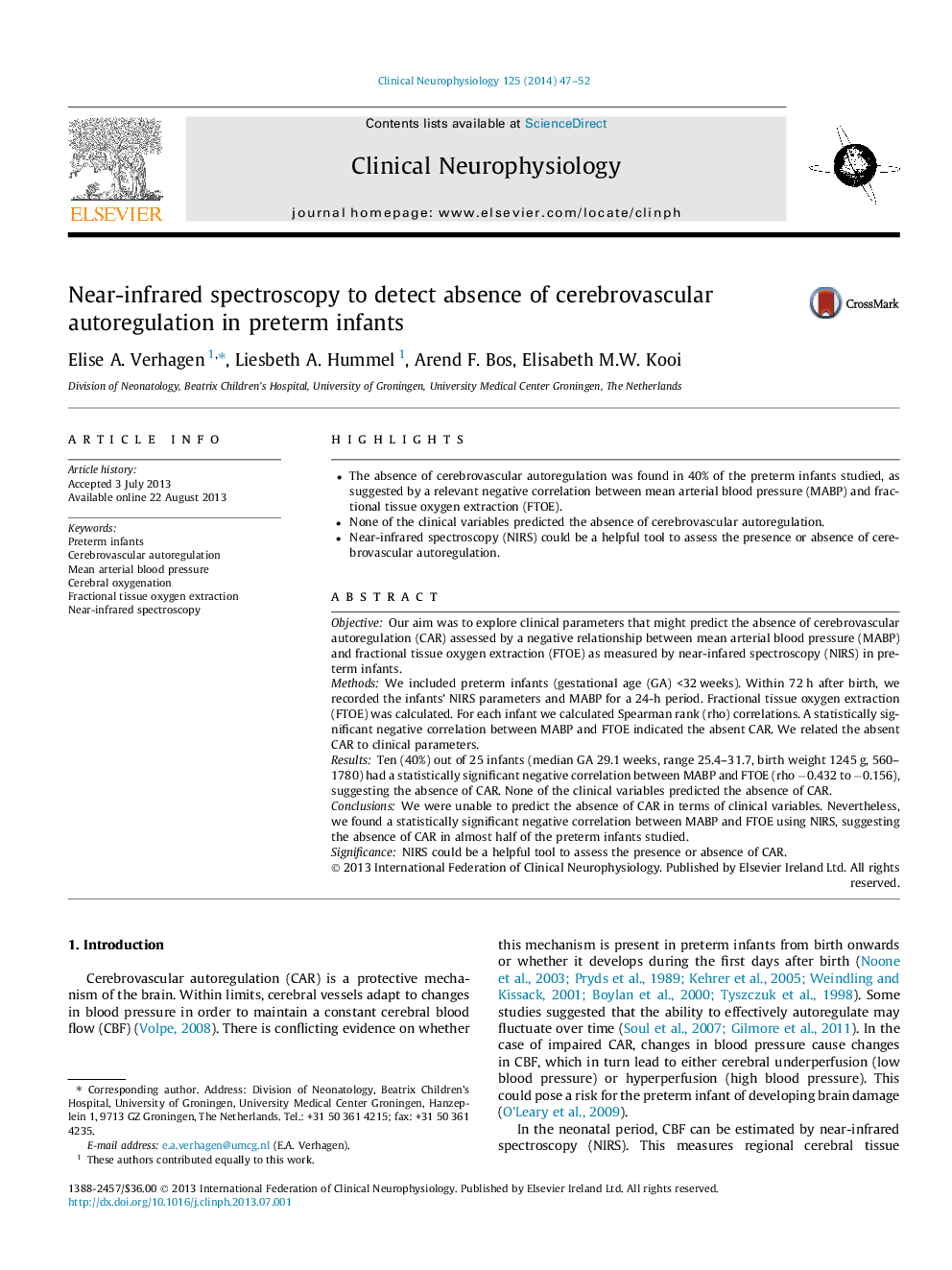| Article ID | Journal | Published Year | Pages | File Type |
|---|---|---|---|---|
| 3043632 | Clinical Neurophysiology | 2014 | 6 Pages |
•The absence of cerebrovascular autoregulation was found in 40% of the preterm infants studied, as suggested by a relevant negative correlation between mean arterial blood pressure (MABP) and fractional tissue oxygen extraction (FTOE).•None of the clinical variables predicted the absence of cerebrovascular autoregulation.•Near-infrared spectroscopy (NIRS) could be a helpful tool to assess the presence or absence of cerebrovascular autoregulation.
ObjectiveOur aim was to explore clinical parameters that might predict the absence of cerebrovascular autoregulation (CAR) assessed by a negative relationship between mean arterial blood pressure (MABP) and fractional tissue oxygen extraction (FTOE) as measured by near-infared spectroscopy (NIRS) in preterm infants.MethodsWe included preterm infants (gestational age (GA) <32 weeks). Within 72 h after birth, we recorded the infants’ NIRS parameters and MABP for a 24-h period. Fractional tissue oxygen extraction (FTOE) was calculated. For each infant we calculated Spearman rank (rho) correlations. A statistically significant negative correlation between MABP and FTOE indicated the absent CAR. We related the absent CAR to clinical parameters.ResultsTen (40%) out of 25 infants (median GA 29.1 weeks, range 25.4–31.7, birth weight 1245 g, 560–1780) had a statistically significant negative correlation between MABP and FTOE (rho −0.432 to −0.156), suggesting the absence of CAR. None of the clinical variables predicted the absence of CAR.ConclusionsWe were unable to predict the absence of CAR in terms of clinical variables. Nevertheless, we found a statistically significant negative correlation between MABP and FTOE using NIRS, suggesting the absence of CAR in almost half of the preterm infants studied.SignificanceNIRS could be a helpful tool to assess the presence or absence of CAR.
